Disclaimer: As an Amazon Associate I earn from qualifying purchases. Therefore, we may collect a share of sales from the links on this page, at no extra cost to you!
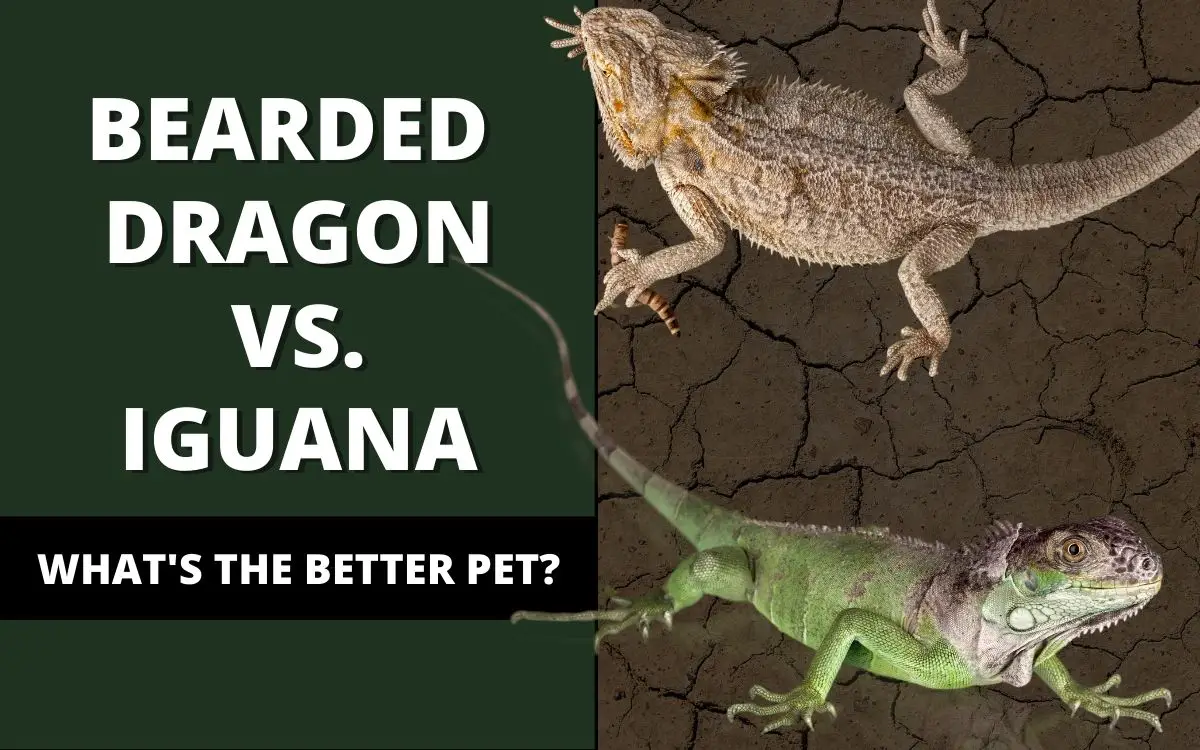
Bearded Dragon vs. Iguana: What’s the Better Pet?
Today we present to you the ultimate lizard guide – the bearded dragon vs iguana.
We understand – deciding between these two reptiles can be a very tough decision!
But, don’t worry! We’re here to help make that decision a little bit easier – or, so we hope!
If you are planning to add a new lizard to your family and still having a difficult time figuring out which reptile is the better option for you, you’re on the right page.
These two reptiles are incredibly unique and make unusual pets, but very fascinating, nonetheless. Owning one will give you a satisfying and joyful feeling, just like your average furry pet!
If you’re considering getting either a bearded dragon or iguana, learning some key facts about them will help you feel a bit more confident in your decision.
Accordingly, before heading out to purchase your pet, it is important to get familiar with their personalities, temperament, diet, characteristics, and compatibility with your family’s lifestyle.
So, let’s jump right into our ultimate lizard guide – the bearded dragon vs. iguana!
Jump to...
Bearded Dragon vs. Iguana: What’s the Difference?
Most people prefer the size of a bearded dragon because they stay relatively small. At full adulthood, they are approximately 18-24 inches from nose to tail.
Bearded dragons are a very popular species of lizards. They are exceptionally tame and almost never bite. In general, they are inquisitive and extremely sociable reptiles.
On the other hand, iguanas grow into large lizards, about 4 to 6 feet from nose to tail.
Although moderately sociable, adult iguanas tend to be aggressive when they’re not handled regularly.
During breeding season, male iguanas demonstrate aggressiveness, especially towards women. Furthermore, female iguanas have the unique capability to lay eggs even without mates. Hence, when they are preparing to lay eggs, it is better to leave them alone to avoid intimidating them.
On the other hand, bearded dragons do not change behavior during breeding season.
Iguanas have long, sharp claws and teeth that can cause a nasty bite or scratch. They also have tails with spines that work like serrated whips if they are provoked.
In contrast, bearded dragons have small teeth and it’s unlikely they will draw blood if they were to bite.
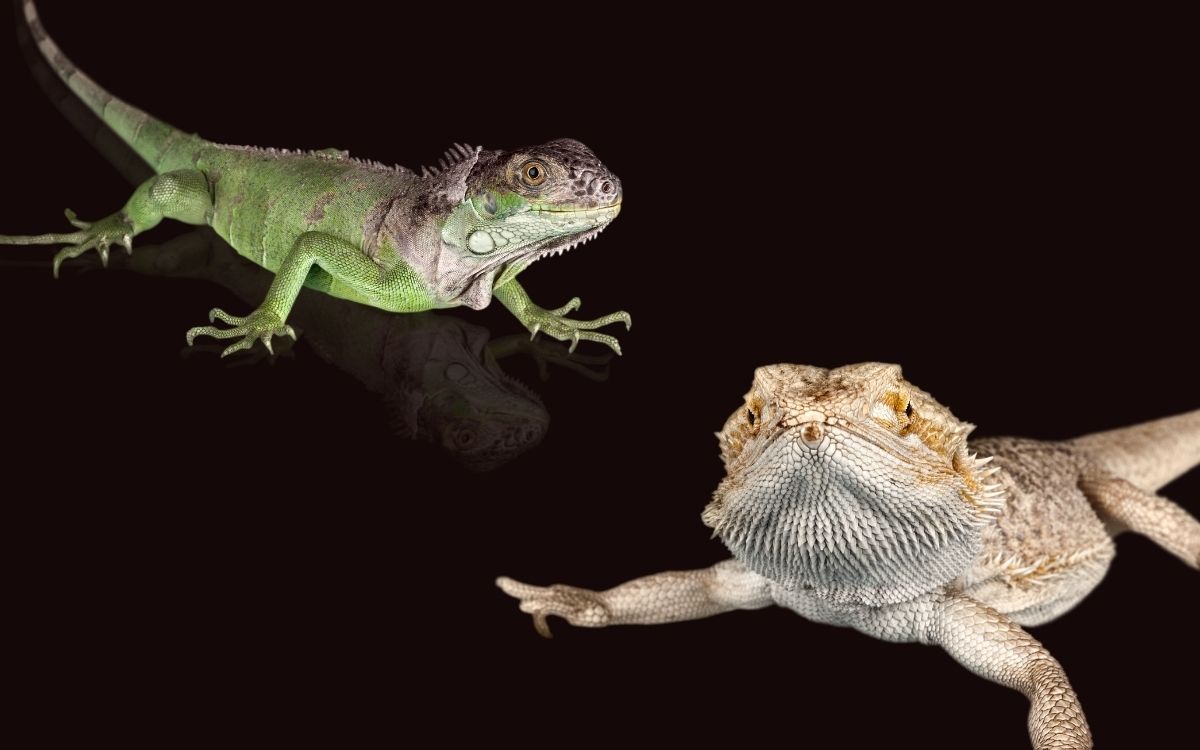
The Best Type of Bearded Dragon for a Pet
There are eight known species of bearded dragons. The most sought-after type is the Pogona vitticeps, a central or inland bearded dragon from the southeastern areas of Australia. It is commonly referred to as ‘beardie’ due to the spiny pouch (beard) under the jawbone or chin. The pouch usually turns to black when the bearded dragon is aroused or stressed. It also expands during mating or when threatened.
The series of spines that are projected horizontally on all sides of the bearded dragon’s body run from its head to the base of the tail. However, these spikes are simply for intimidating potential predators. Although they make look scary, the spikes are relatively soft and are not painful to touch.
Adult males are slightly bigger than female bearded dragons and possess darker ‘beards’ and larger heads.
Another reason bearded dragons are so popular is because of the many different color variations to choose from, or commonly referred to as ‘morphs’. They come in many different colors including brown, tan, white, red, orange, yellow, black, and grey.
Bearded dragons have a unique behavior called ‘arm-waving.’ They like lifting one of their arms slowly, then put it down again in a slow manner. Sometimes, they also do a head bob when they wave their arm. It’s quite funny to watch!
No one really knows why they do this act, but it may be their way to communicate something or perhaps an instinctive motion to indicate their submission to more dominant animals.
Here are some of the different morphs you can choose from:
Classic Bearded Dragon
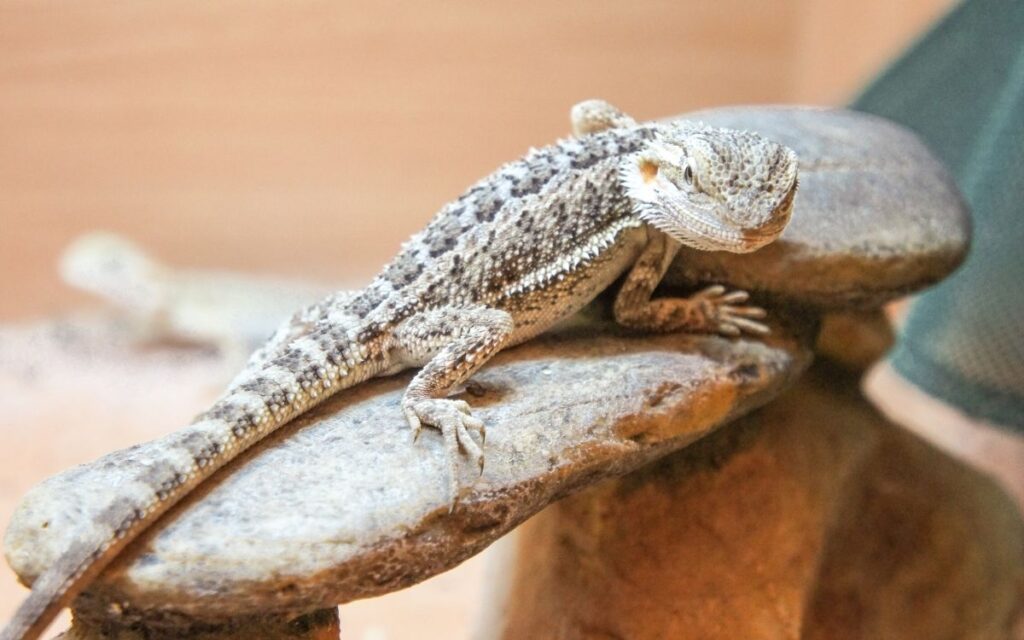
Tangerine Bearded Dragon
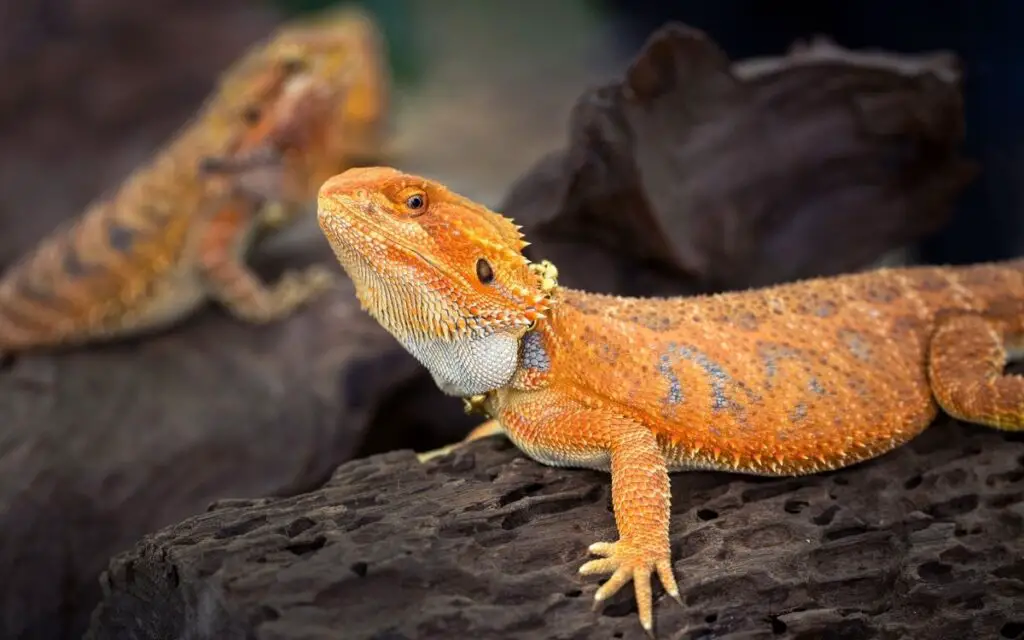
Sandfire Gold Bearded Dragon
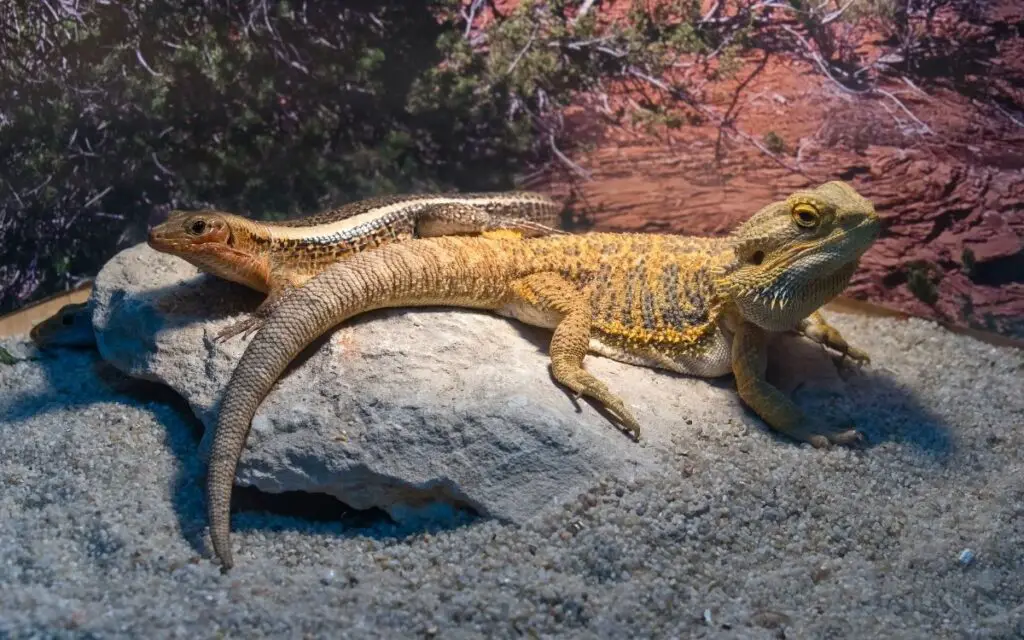
Pro Tip: Check out our post on the the 10 best bearded dragon breeders in the United States!
The Best Type of Iguanas for a Pet
There are three kinds of iguanas that are top choices for pets — the green iguana, the desert iguana, and the rhinoceros iguana. They are the easiest iguanas to manage and the most docile. Some of them are also quite shy but relatively friendly when handled frequently.
The rhino and green iguanas are large pets, while the desert iguana is typically small. Despite their unique set of temperaments, all three love to be handled when they are babies.
As they grow older, they seek company and attention. It’s best to buy a baby iguana and raise it to ensure a strong bond. It also gives you the opportunity to tame the iguana properly.
Here are some images of these types of iguanas:
Green Iguana
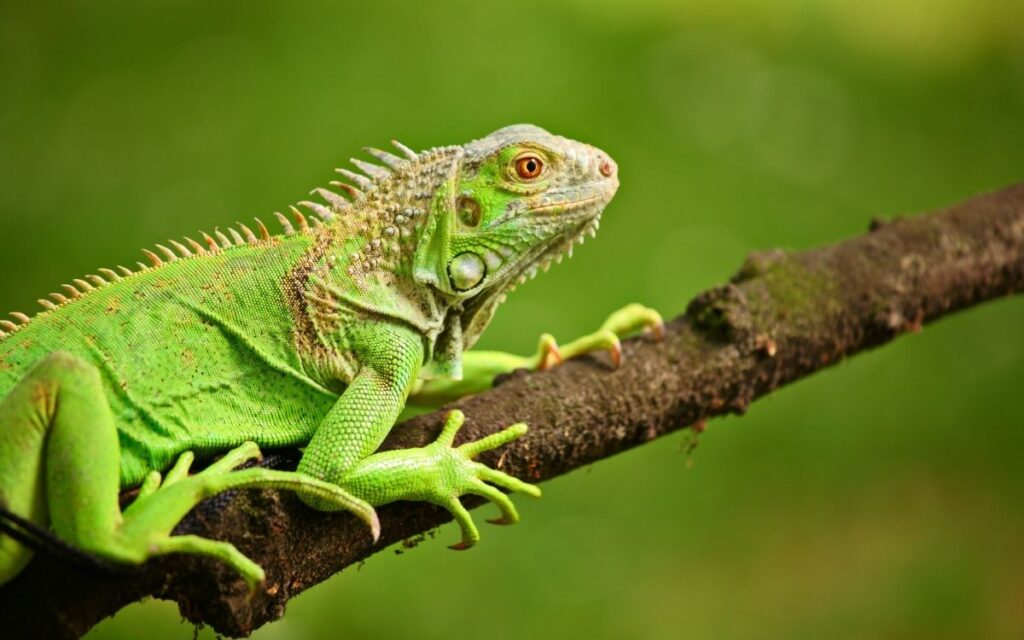
Desert Iguana
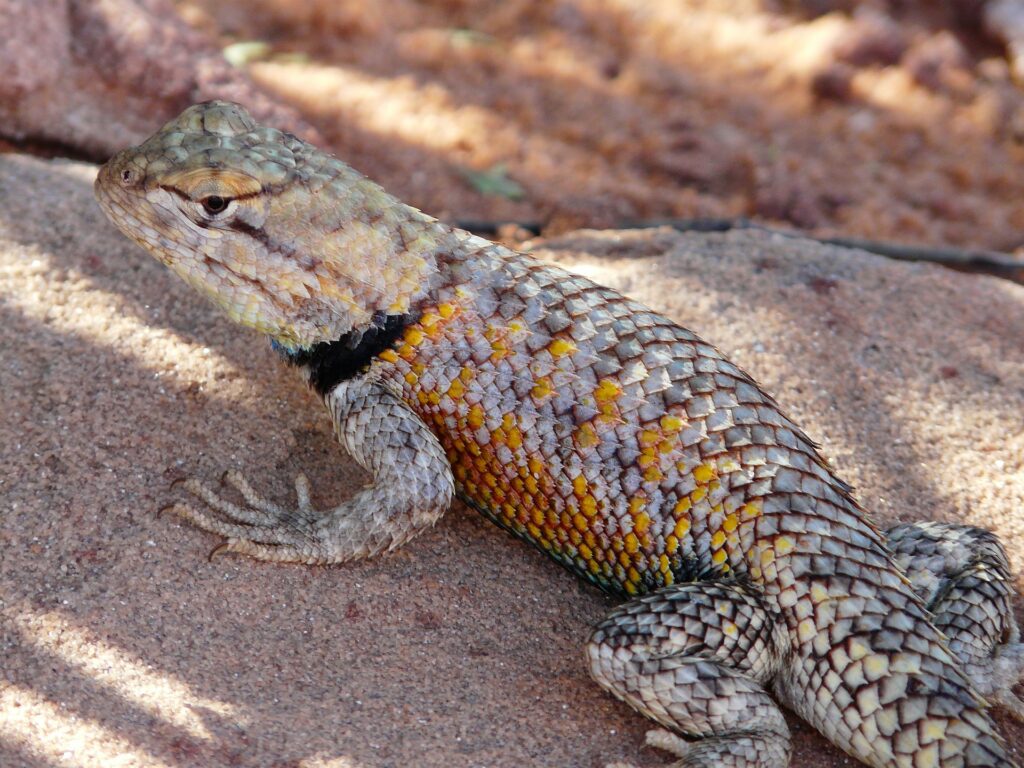
Rhinoceros Iguana
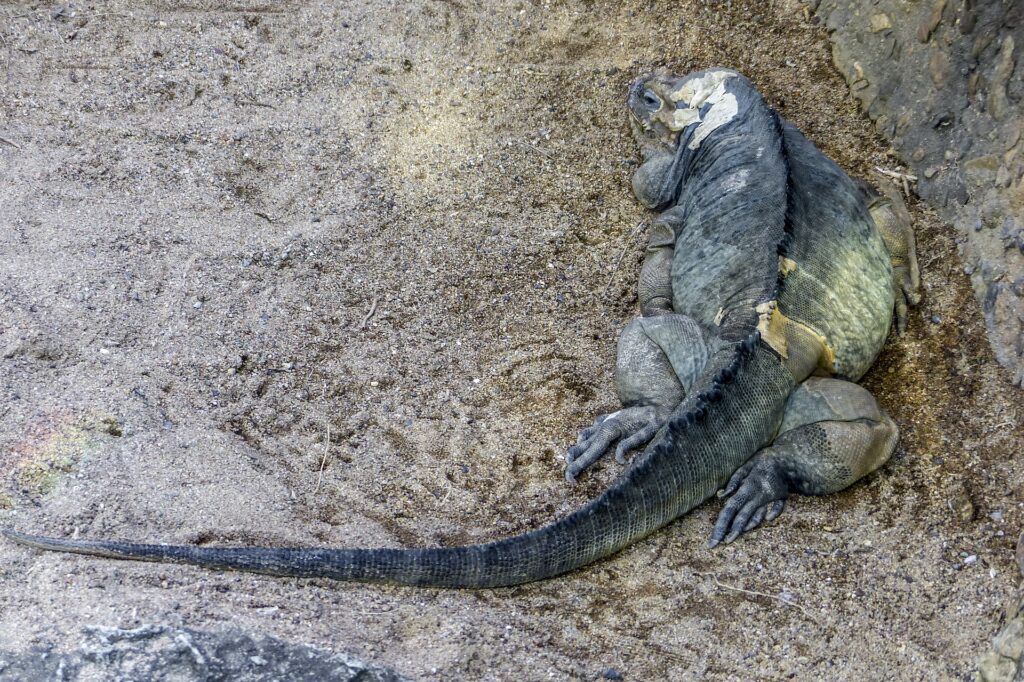
Green Iguanas
Green iguanas are by far the most popular type of iguana. Green iguanas are found in Central and South America as well as the Caribbean. They make excellent pets because of their docile and calm nature.
They come in different shades of green as well as brown and gray. During the season of breeding, they usually change colors and turn to orange. Green iguanas have a stout build with razor-sharp teeth, prominent jaws, and long tapered tails. Almost half of their body is all tail.
One special feature of green iguanas that other species do not have is the immovable upper eyelids. Their eyes are also laterally situated. Like their cousins, their tails are detachable. They usually detach their tails when caught or tangled, but they eventually grow back.
A fully-grown green iguana measures up to 5 feet and weighs approximately 10-20 pounds – much heavier than most lizard species!
Green iguanas are herbivorous and love a variety of collards, dandelions, turnips, mustards, parsnip, butternut squash, and mango.
Fun Fact: Iguanas are one of the few reptiles that can survive a fall of up to 50 feet without getting injured!
Desert Iguanas
This type of iguana can be found in the Sonoran and Mojave deserts, the southwestern United States, and some parts of the Gulf of California. They have a much shorter lifespan than other types of iguanas – only about 8-10 years.
When fully grown, their bodies reach up to 24 inches, including their tail. Furthermore, they are only 2 pounds at the most – much lighter than the green iguana!
Desert iguanas have blunt heads and a tough appearance. They usually have gray and tan colors, but some of them possess reddish-brown patterns on the back and sides. There is also a row of small dorsal scales from the center of the back and progresses down to their bodies.
The male desert iguanas have brown spots on the tail and pale bellies. They turn pinkish in color during the breeding season. Desert iguanas regularly change their body color to regulate their temperature. They turn white during the early afternoon when the sun reflects off their bodies and dark at night when the sun is down.
They are herbivores and love small yellow flowers, dandelion flowers, alfalfa leaves, and prickly pear cactus. They also love eating mealworms and crickets.
More: Thinking about a leopard gecko instead? See our guide comparing bearded dragons and leopard geckos!
Rhinoceros iguanas
Mostly found in Haiti, the Rhinoceros iguana got its name from the three horn-like protrusions on its head. Rhinoceros iguanas have a uniform gray color and large bodies. They grow up to 4.5 feet and weigh between 10-20 pounds during adulthood.
They are omnivores and need a variety of foods but are very easy to feed. They enjoy eating vegetables, but also small mammals, birds, and invertebrates. They reach sexual maturity at age two or three but can easily live more than 20 years!
Despite their intimidating appearance, these iguanas make for excellent starter reptiles! They are one of the friendliest of the iguana family and when they grow fond of you, they will follow you around. Their personalities closely resemble pet dogs because they will defend you when you let them loose in the yard.
Although, it’s important to note that rhinoceros iguanas are a very territorial species. During breeding season, they can become especially moody. They warn off their predators by whipping their tails.
Factors to Consider Before Buying a Bearded Dragon or Iguana
Both of these lizards make excellent starter reptiles. Perhaps this is due to their unique looks, calm temperaments, and adoring nature when they get attached to the owners.
However, taking care of them also entails a lot of work because you need to consider their natural needs and defenses as well as individual patterns of growth.
Here are other characteristics of bearded dragons vs. iguanas to help you decide which is the better pet for you and your family’s needs.
Cost
The cost of owning a bearded dragon or an iguana depends on where you live. If you can find a trusted breeder in your area, it is best to buy from them.
They sell them at cheaper prices compared to pet stores. Moreover, breeders generally produce much healthier reptiles because they are specialists in their field.
Depending on the morph, bearded dragons are typically sold between $20-$150. Babies are generally much cheaper compared to the more mature ones. However, a rare morph may cost as much as $1,000 or more.
The price of iguanas depends on their breed. The extremely rare ones can go as high as tens of thousands of dollars.
The green iguanas, however, are by far the cheapest. A baby green iguana could cost you as little as $15 to $20, while the adults are priced around $100 to $150.
You can also opt to adopt an iguana from the rescue centers. There are many iguanas that are given away by owners who could not take care of them anymore.
Life Expectancy
While the quality of care is a big factor in their lifespans, bearded dragons can live up to 7 to 12 years, while iguanas live for 10 to 15 years on average.
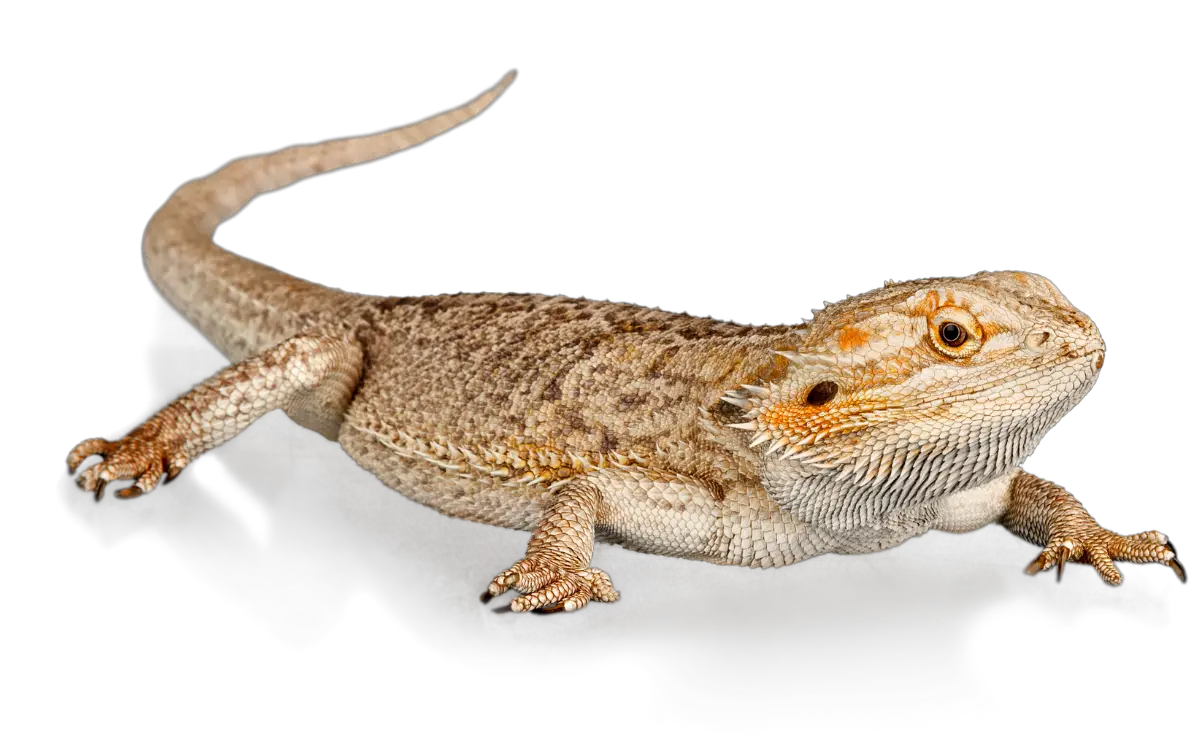
Diet
Most bearded dragons are omnivores, while iguanas are herbivores and strict vegetarians. However, both lizards need dark, leafy vegetables to thrive. Although, unlike iguanas, bearded dragons require live insects and worms for their healthy dose of protein.
Expect to spend $20 to $40 every month for feeding adult iguanas and $40 to $100 a month to feed adult beardies.
Caging
An adult iguana needs a minimum enclosure of 5x7x6 feet. You will probably have to build a custom enclosure – or else you’ll end up spending a ton of money if you purchase one that’s already built.
Iguanas love basking and climbing branches or structures, so this is something to also keep in mind. Purchasing logs and branches can be very expensive.
Bearded dragons need wider terrariums, not necessarily tall. An adult can thrive in a 40 to 65-gallon tank. Fortunately, you can purchase a tank of this size for a couple of hundred dollars.
Daily Care
Iguanas
Iguanas thrive on routine. They like to eat, sleep, and poop on a schedule. This is something to carefully consider as it may impact your regular routine and lifestyle.
One cool thing about iguanas is you can actually potty train them. Yes, you heard that right!
Here are some general guidelines you can expect to follow on a daily basis:
- Bathe your iguana daily and mist it two times a day or at least four times a week.
- Allow it to poop daily in a plastic tub with water in the cage or the bath.
- Give it chopped fresh salads every day.
- Wash the water and food bowl daily.
Bearded Dragons
A bearded dragon requires many of the same things. Here are some things to keep in mind when it comes to taking care of your beardie:
- They need 1-2 baths per week.
- You need to remove leftover food and poop daily. It will poop anywhere in the cage and it can smell very bad if left in the cage.
- Cleaning the food and water dish with soap and water on a daily basis is necessary.
- It is also essential to take care of the feeder insects by gut-loading them for 24 hours before feeding them. This means you have to keep the bugs in a container with water and food.
- Keeping its enclosure clean is very important. Expect to deep clean your beardies enclosure at least once a month.
Heating, Lighting, and Humidity
Both bearded dragons and iguanas need high basking temperatures of 100 degrees Fahrenheit (37.3 Celsius). Therefore, you will need to get a special bulb that generates heat on one side of their enclosure.
Furthermore, they require UVB bulbs in order to process calcium. This is crucial for the bones and skeletal structure of your reptile. Below are the requirements:
- Iguanas require a 5 to 10 UVB bulb.
- Bearded dragons need a 10 UVB bulb.
Also, since both of these lizards originate from hot climates or deserts, they only need low levels of humidity – about 25 to 40%. If you have a green iguana, which usually comes from tropical rainforests, the cage humidity should be somewhere around 65 to 70%. In order to reach these humidity levels, you will need a humidifier for the additional moisture.
Adaptability
A bearded dragon is more adaptable and tolerant compared to an iguana. Iguanas dislike changes or disruptions of their daily routine. Any change in their pooping, sleeping, or feeding times make them irritated. Your pet iguana has a tendency to become angry with specific colors or if you wear a towel around your head. Your time outside and inside the house can also stress it.

Brumation
If you’re not familiar with brumation, it is basically a period when reptiles become sluggish, do not eat as much, and sleep much more often. This is simply a survival technique that is natural in most reptiles. It generally happens during the winter when food is scarce, and the sun isn’t out.
The good news is, Iguanas do not brumate at all.
On the other hand, bearded dragons can brumate, it really just depends. If they do brumate, it will be during the winter months. However, most people report that bearded dragons rarely brumate.
Suitability for Kids
Most would agree that the best beginner-reptile for children is the bearded dragon. It is more mellow, calm, and does not scratch or bite. They make amazing companions and can even chill with you while you are doing stuff like watching television, lying in bed, etc.
Furthermore, bearded dragons are more easy-going and easier to handle. They are the best beginner pets for a lot of reasons, including their friendly demeanor and laid-back personalities.
On the contrary, iguanas are not ideal for children or beginners because they have unpredictable temperaments, especially during breeding season.
At around 2 to 2 ½ years old, iguanas reach their sexual maturity. It is not uncommon for iguanas to become aggressive and cranky during this time of year.
Additionally, many iguanas are very large and can be quite heavy for a child to handle.
Danger Level
It is extremely uncommon, almost unheard of, for a bearded dragon to bite.
On the other hand, iguanas are known to scratch and bite, especially when they are moody. This is why its important to get your iguana as a baby, so it is properly tamed. If needed, you can buy a set of gloves, so your iguana won’t scratch you.
Personality
Once tamed, iguanas make excellent pets. They have fascinating personalities, characteristics, and behaviors. Both male and female iguanas can show ‘alpha’ or dominant traits or a ‘beta’ or tamed personality. The personality of each individual iguana will vary wildly.
In contrast, almost all bearded dragons enjoy human interactions. They are simply the reptile version of ‘a man’s best friend’.
Both bearded dragons and iguanas are active in the daytime and sleep during the night.
How Long Will It Take to Train a Bearded Dragon or Iguana?
Now that we’ve discussed some factors to consider before getting a bearded dragon or iguana, let’s look at the time it takes for you to train them:
Iguanas
Taming an iguana can take months. You need to be persistent and patient because it takes a lot of time and effort.
However, once you have trained your iguana, you will be surprised by its developing personality and clever traits.
Here’s some tips to keep in mind when training your iguana:
- You need to show who’s in charge at all times. However, you need to balance your firmness and persistence to avoid pressuring or stressing out your pet.
- Always keep in mind that you are dealing with a potentially dangerous reptile from the wild and not all people do not like it around.
- When it struggles or becomes more aggressive, do not show that you are afraid. If it sees you backing down, your iguana will feel it has won. It will associate aggression with your backing off, so you lose taming it successfully.
There are two critical factors that you need to consider before training your pet – predictability and patience. Allow it first to settle in for several days or weeks before you start the taming process. Otherwise, you will stress it out.
It is also a good idea to you make time to train your animal routinely. Iguanas like familiarity and consistency, so create strict or routine tasks. The better you stick to your routine, the more comfortable your iguana will feel.
Furthermore, iguanas are extremely intelligent reptiles. Once you have tamed your iguana, it will be like having a pet dog. It will follow your lead and it will even respond to its name being called!
Bearded Dragons
Bearded dragons are quite intelligent as well. They will recognize their owners and develop close a close relationship with them. They learn new things by simply observing how other creatures behave.
When training a beardie, it is important to be consistent. You can start handling them from day one and you should handle them regularly. Aim to handle your bearded dragon at least once a week and it will never develop a fear of being handled.
How to Handle Your Bearded Dragon or Iguana for the First Time?
Here are some tips on how to handle your bearded dragon or iguana for the first time:
Iguanas
It is necessary to keep your movement consistently slow during the first time you make physical contact with your pet iguana.
- Hold out your hand and wait for the reptile to accept it.
- Once it does, try to pick it up slowly.
- A baby iguana can be scooped up from under its belly, while an adult or larger iguana can be supported under the pelvis and belly using both hands.
Remember that your pet will be nervous and will start squirming around. Do not let it go and wait for it to calm down. You are teaching it that calmness is the only way that it will be put back down.
Bearded Dragons
When picking up a pet bearded dragon, avoid making sudden movements towards it. By doing so, you may make it feel threatened or you may spook it.
- Move your hand slowly towards the beardie.
- Carefully slide your hand under its belly.
- When picking up a baby bearded dragon, carefully keep one finger under its chin. Allow it to hold into your fingers.
- Lift the bearded dragon carefully and allow the tail to rest on your forearm.
- If your pet begins fidgeting or tries to escape, do not grasp or squeeze it.
When handling your pet beardie, make sure you’re close to the ground. You don’t want to risk your beardie jumping and injuring itself.
How to Select a Bearded Dragon or Iguana?
When you’re on the search for your next reptile, it is important to find a reliable source.
Online breeders and reptile expos are usually going to be your best bet. You can be confident that you’ll be getting a healthy reptile.
Pet stores are notorious for not taking care of their reptiles. They usually have badly-setup enclosures and don’t take proper care of the animal. This isn’t to say you can’t find a good reptile at a pet store, just be a little more cautious!
When picking your reptile, avoid ones with sunken eyes, loose skin, or a skinny body. Definitely avoid one that is inactive or lethargic.
A healthy bearded dragon or iguana is alert, active, and aware. Check the girth of the tail. It should be plump, round, and full, not skinny and bony.
Bearded Dragon vs Iguana: What’s the Verdict?
Well, that’s the end of our competition, bearded dragons vs iguanas!
To sum it all up, bearded dragons are great beginner pets because they are small, easy to handle, and great with kids.
On the other hand, iguanas are large, a bit more difficult to handle, but develop an extremely intimate relationship with their owners. They are curious animals and have unique personalities!
So, now that you know a little more about each of these reptiles, which one are you most interested in?
